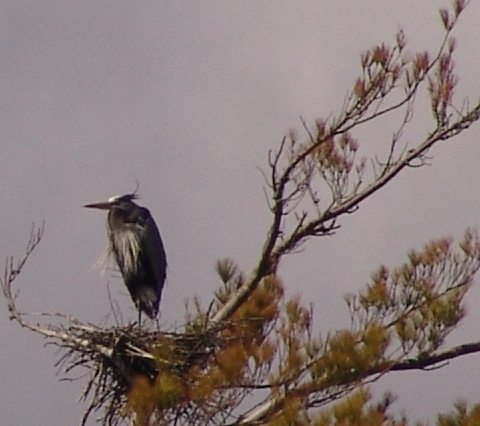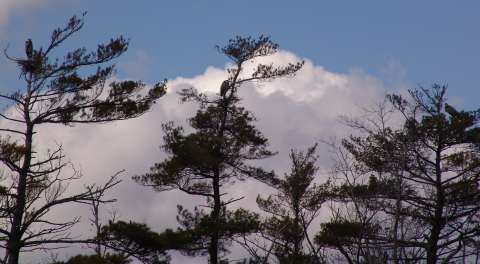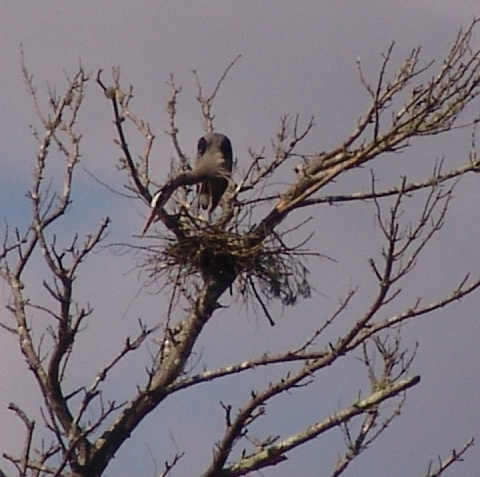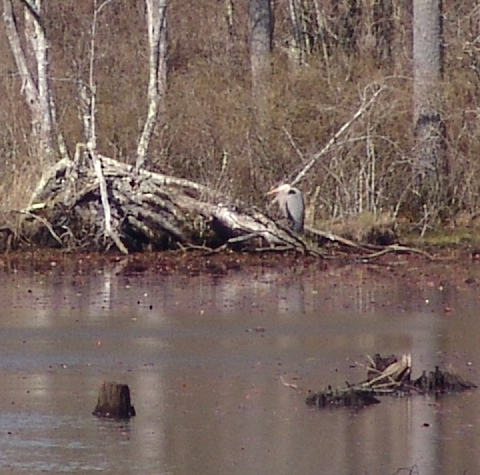
Great Blue Heron Nest
More great blue herons (Ardea herodias) arrived at the Marion rookery on April 3rd and 4th, and nest building was in full swing. Turtle Journal watched this couple, female on the nest and male above, completing their nest in a tall, dead white pine tree immediately abutting the fresh water pond.

Male Heron Leaves Nest to Acquire Building Material
The process seemed endlessly and patiently repetitive. The male heron departs the nest and flies across the pond to a copse of white pines on the western bank.

Male Heron Collects Material from Nearby Tree
He spends a few minutes in a stressed, dying or dead pine as he selects the perfect branch to add to the nest.
 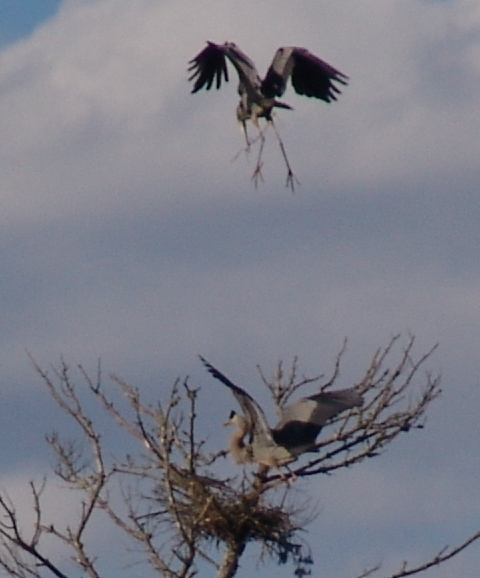
Male Heron Returns to Nest
The male heron returns to the nest and hovers …
 
Male Heron Carries Building Material to Waiting Female
… as he carefully descends on the branches above the nest.

Female Heron Prepares to Receive Nesting Material from Male
The female heron awaits as the male settles gently onto the tree.

Female Heron Accepts the Nesting Material from the Male
He passes the branches to the female heron who remains in the nest.

Female Heron Arranges Building Material into the Nest
She takes the branch from the male heron and meticulously inserts it into the nest as he watches from above.

Then the Process Begins Again
Once the female heron finishes placing the material into the nest, the male prepares to depart and the nest building process continues branch by branch, twig by twig, needle by needle until the couple are satisfied. The finishing touch will include a softer lining of moss and grass to cradle the eggs.









